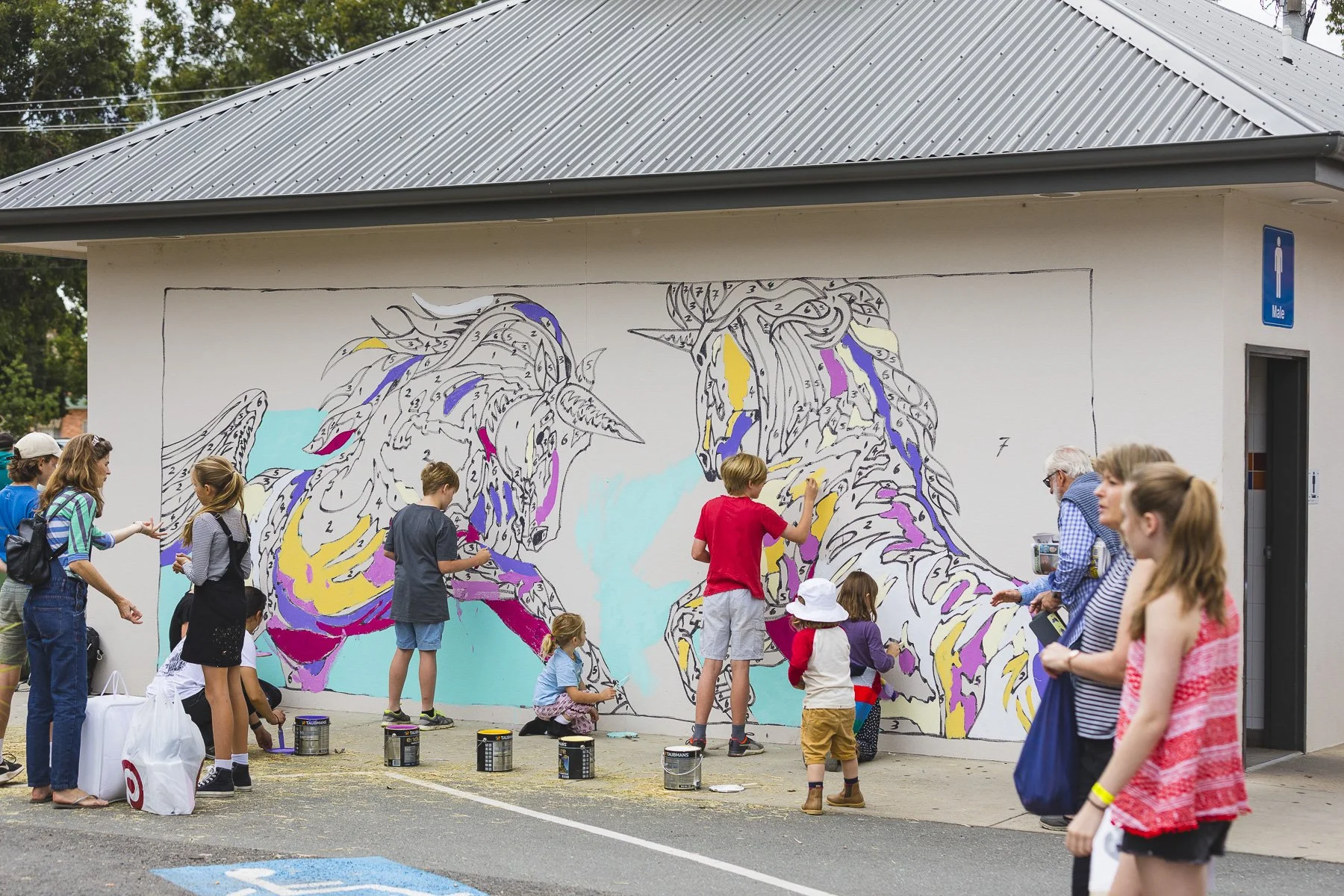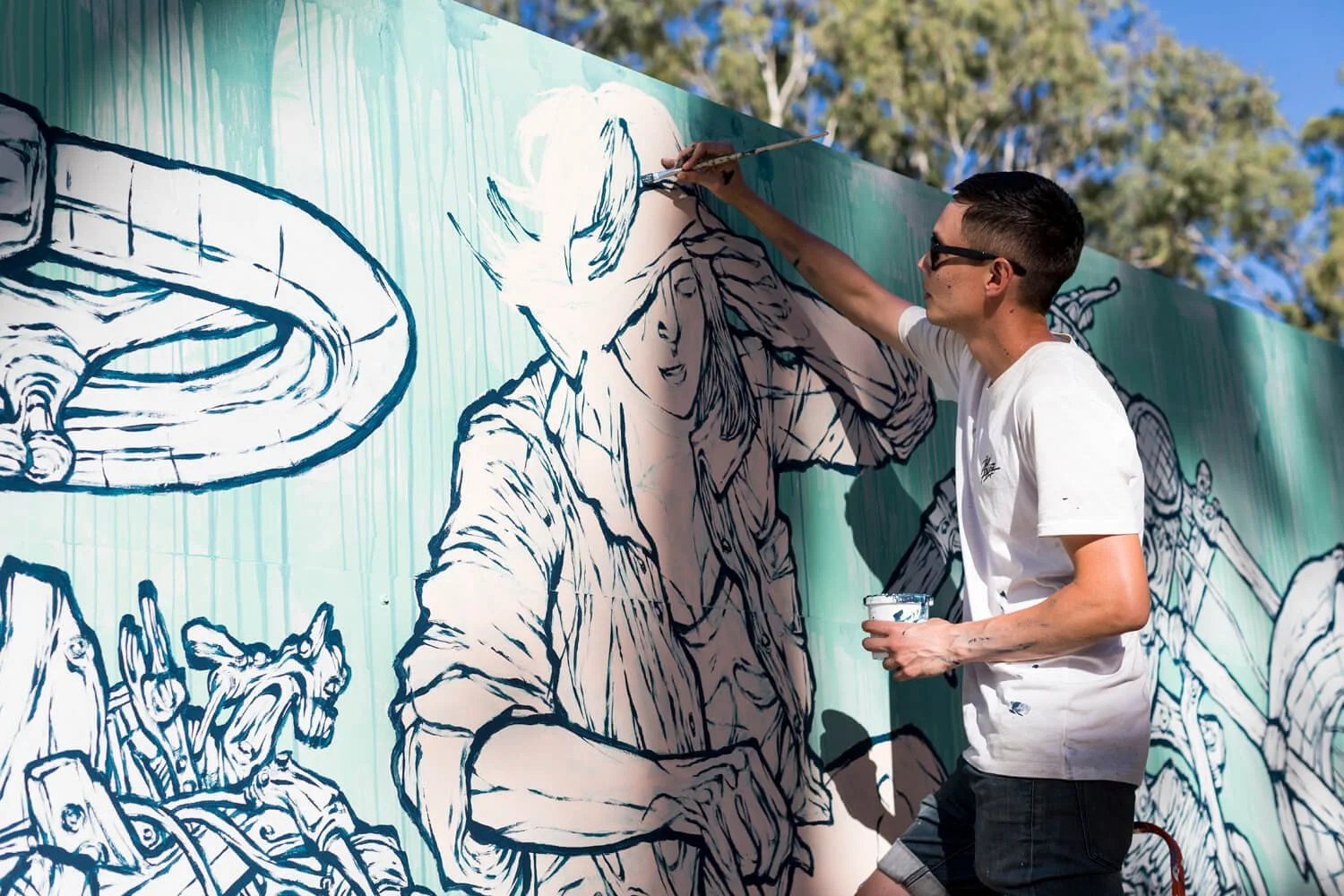Community Funding & Grants Guide
How to Secure Funding for a Wall to Wall Festival in Your Town or City
A practical, easy‑to‑use guide to help communities, councils, and organisers identify, apply for, and secure the right funding to bring a street art festival to life.
1. Understand the Funding Landscape
Local Government Funding
Arts & Culture budgets
Economic development funds
Tourism activation budgets
CBD revitalisation or placemaking programs
Community development fund
Business Sponsorship
Local business contributions
Medium to Large Regional employers
Brands seeking cultural partnerships
Hotels and Accommodation
State & Federal Grants
Tourism/event attraction funds
Creative industry development grants
Youth engagement funding
Social impact / community wellbeing program
Economic Development
Community Fundraising
Donations from locals
Crowd Funding
Merchandise packs
Local fundraising events
2.Define Your Funding Strategy Early
Different funding types have different timelines. Grants are highly competitive. We recommend covering all bases and creating as much diversity within your strategy as possible. Many hands make light work, and the same goes for event funding. The more revenue streams you have, the lighter the load on each funding party.
Create a Funding Mix:
40–60% Council support
20–40% Grants
10–30% Community fundraising
Why a mixed model works:
No single body carries the whole cost
More resilience against grant rejections
Wider community buy‑in
3. Build a Strong Funding Case
To secure funding, you’ll need a compelling narrative. Funders want clear community, economic, and cultural benefits. They are after professional, well-developed applications that show a clear pathway to a successful event.
Your funding case should include:
Why your town wants a festival
The walls you’ve identified
The community benefits (tourism, vibrancy, youth engagement)
Projected visitor numbers
A high‑level budget
Your project timeline
Evidence of community support
4. How to Approach Council for Funding
Before your meeting:
Prepare your top 3 walls
Collect photos & create wall mockups
Build a simple one‑page budget
Bring examples of murals from other festivals
Explain to them:
The festival’s benefits
Economic uplift (cafes, retail, tourism)
Social benefits (youth engagement,
pride of place)
Timeline and deliverables
Your requested level of support
What councils love:
Community backing
A proven festival model (Wall to Wall)
Clear risk management
A credible delivery partner (Juddy Roller)
Statistics
5. Writing Strong Grant Applications
Always Include:
A clear vision statement
Evidence of community need/benefit
High‑quality imagery + references
A strong project plan
Realistic budget + contingency
Evaluation plan (how you’ll measure impact)
Letters of support (council, business owners, artists
6. What grant assessors look for:
Community impact
Artistic merit
Feasibility & readiness
Financial responsibility
Alignment with strategic prioritiets
7. Sponsorship Pathways
Local Sponsors:
Cafes, restaurants, retailers
Local tourism operators
Real estate agencies
Tradies and building companies
Regional + National
Paint Company
Lift Hire (Kennards, Coates)
Local Banks
Media (local papers)
Offer sponsors:
Logo placement
VIP tours + events
Social content inclusion
Co‑branded signage
Media exposure
8. Community Fundraising
Local Trade businesses often donate:
lifts / EWPs
paint / tools
labour
scaffolding
storage
meals or vouchers
Every $1 in-kind = $1 more for the mural budget.Business donation program
Crowdfunding Ideas
Offer rewards like:
stickers
limited edition prints
mural postcards
a signed polaroid with artist/s
Wall naming rights
private mural tour
Tickets to VIP “Artist Dinner” / Event launch
A $50–$100 reward tier ALWAYS performs better than basic donations.
9. Funding Timeline Template
Ideal planning window: 6–12 months before the festival
Month 1–2: Identify walls, approach council
Month 2–3: Research grants, begin applications
Month 3–6: Secure council support + grants
Month 4–7: Meet sponsors + confirm contributions
Month 6–12: Lock artists + production planning
Need Help With Funding?
Juddy Roller has successfully secured funding for dozens of mural festivals via councils, grants, sponsors, and community contributions. We can assist with: - Grant writing - Pitch decks - Sponsorship proposals - Council engagement Budgets & project planning
Reach out and book a call.
Frequently asked questions
-
Most regional towns run successful festivals with budgets between $80k–$350k, depending on wall size, number of artists, access equipment requirements, and event programming.
-
Not always — but it helps enormously.
Many grants require a letter of support or a formal acknowledgement. If the council isn’t ready to commit funds yet, a support letter is usually enough to move forward. -
Absolutely.
Some of the strongest examples, Tumby Bay, Brim, and Lameroo started with tiny budgets and a massive community drive.
Grants, local sponsorship, and community fundraising can bridge the gap surprisingly quickly.
-
Great applications always include:
a clear vision
photos/mockups of proposed walls
a realistic budget
community support evidence
tourism & economic benefits
strong partners (Juddy Roller / Wall to Wall)
a feasible timeline
letters of support
Assessors look for impact + feasibility + community alignment.
-
Ideally 6–12 months out.
Some grant rounds open only once or twice a year, and funding takes time to process.
However, sponsorship and community fundraising can often be activated in under 4–8 weeks. -
It happens, but it’s not the end.
A strong strategy uses multiple funding streams:grants
council support
sponsorships
community fundraising
If one area falls through, others keep the project alive.
Many towns run a festival successfully after 1–2 rejected grant rounds - persistence is key.







